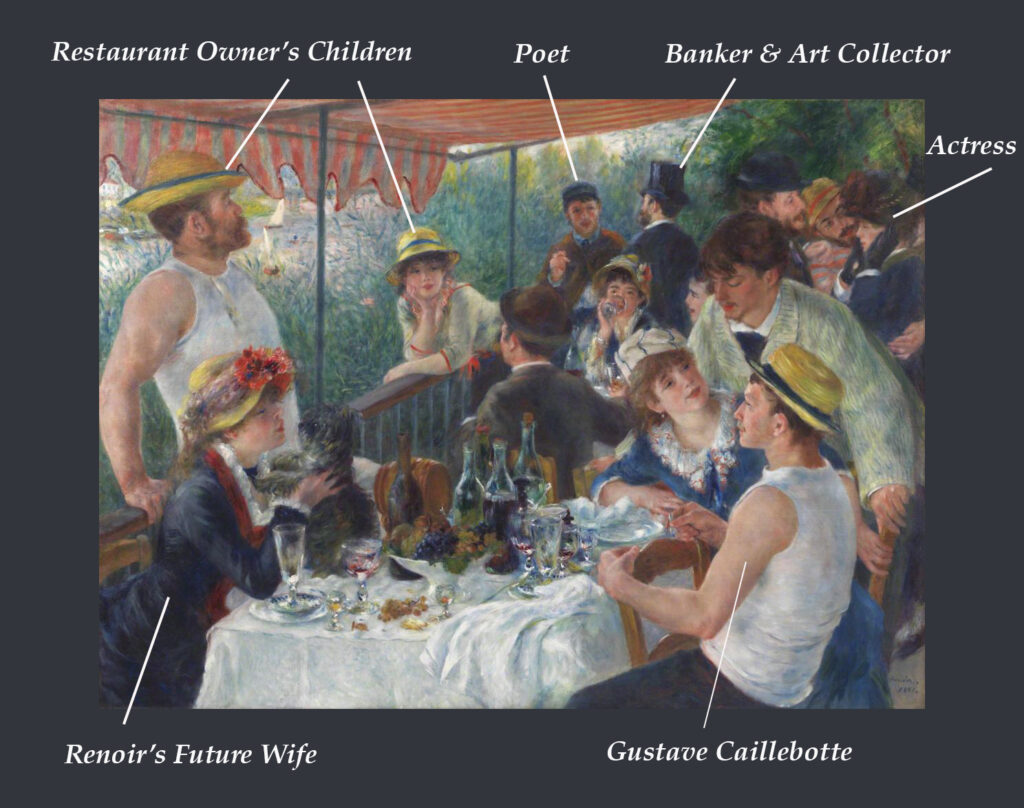The Luncheon of the Boating Party is unquestionably the best known masterpiece by the impressionist painter Pierre-Auguste Renoir (1841-1919). But what is the painting depicting? Where is this mysterious French restaurant? And who are these people ? All good questions to stimulate conversation if you are hosting a luncheon or a dinner party.
Where Did This Luncheon Take place ?

The setting for the luncheon was at Le Maison Fournaise. It was, and still is, a popular restaurant on the Île des Impressionnistes (Island of the Impressionists) in the Seine River at Chatou on the outskirts of Paris. After eating there a few years ago I can happily attest that it looks very much the same and still serves wonderful French cuisine.
The restaurant dates back to 1856 but closed in 1906. Since its restoration in 1990 it has remained an ever popular venue.
Who Are the Boaters at the Party ?
Painted in 1880-1881 and exhibited at the annual French salon the following year, The Luncheon of the Boating Party encapsulates the spirit of joy, leisure, and camaraderie during a period of renewed optimism and prosperity (the Belle Epoque) in France. It portrays a group of friends gathered together on a sunny afternoon after boating along the Seine River.
The diverse cast includes Renoir’s friends, artists (specifically Gustave Caillebotte), Renoir’s future wife, and other bohemian figures of the time. The women exude elegance and charm, while the men show confidence and masculinity.

The Painting Itself
The Luncheon of the Boating Party is a sizable 69 x 51 inches in size. It was obtained by the Phillips Collection (Washington, D.C.) in 1923 where it still resides. It is one of the viewed and memorable pieces of art in their collection.
Renoir’s composition is a visual feast. His use of vibrant colors and minute details along with loose, spontaneous brushstrokes captures the essence of Impressionism. The play of light and shadow creates a sense of movement and liveliness, as if the scene is unfolding before our eyes.
The boating party serves to encapsulate the Belle Epoque as a new era of leisure and enjoyment, where individuals from different social classes could come together and revel in shared experiences.


